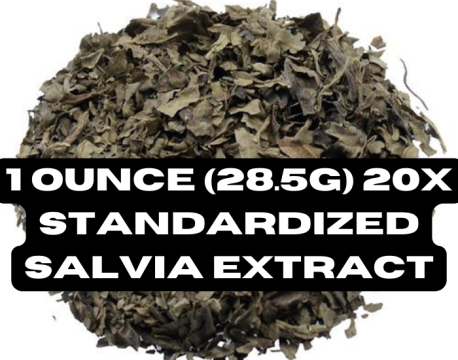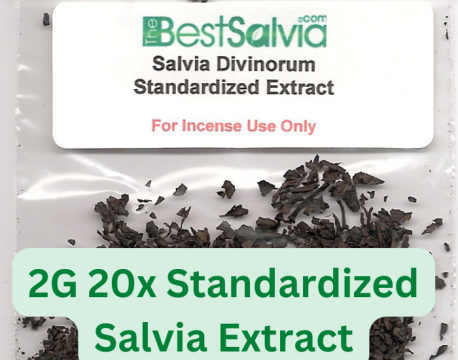Salvia leaves are increasingly becoming popular among herbalists and health enthusiasts. They are known for their healing properties and have been used for centuries in traditional medicine. Dried Salvia leaves can make teas, tinctures, and extracts that can help improve mental clarity, reduce anxiety, and enhance mood. This article will discuss how to use dried Salvia leaves for maximum potency and get the most out of them. We will also look at some of the best ways to use them daily.
3.5″ Swirled Color Changing Sherlock Fumed Glass Spoon Hand Pipe
Some people who use dried Salvia frequently may want to grow their crop and process the dried leaves themselves. What is excellent about these dried leaves is that they can retain their potency for an extended period of years if they are appropriately stored in lightproof containers. Learning how to dry its leaves is a must for people who want to experience its highest potency effects.
Drying Techniques
Choosing a healthy Salvia plant, not too old and of the appropriate size, can help ensure the best quality dried leaves. Harvesting leaves from a mature plant can yield more potent results than harvesting from a younger plant. Harvesting your plants in this manner helps them conserve their energy for reproduction and growth. If you have access to fresh leaves, it is recommended that you preserve them by drying them or freezing them before use or for future use.
There are six different ways how to dry the leaves. The first method is simply waiting for your plant’s dried leaves to be shed. That way, you do not pick the leaves and deprive the plant of leaves that it probably needs to grow. Once the leaves are shed, you must place them on a plate or flat surface in a low-humidity environment. Turn them now and then, and once they are dry, you can store them in a container away from light. There is also no guarantee that your plant will remain in good condition once the leaves are shed.
RELATED ARTICLE: Salvia Divinorum Experiences: How To Take Salvia Divinorum
Dried Salvia: More Methods
Another method is to make tobacco out of salvinorin, which is done by picking the leaves and stacking them. Once it has piled up, you need to cut them into half-centimeter strips, then pile them into a plate, turning them twice daily until they become dry but not crispy.
The following method is done by drying the leaves. It performs as a food dehydrator. What is great about this is that the leaves dried way quickly. Dry the leaves until they are crispy. However, you still have to buy a food dehydrator to use this method. If you want to use something readily available in your kitchen, you can try drying a batch of leaves in an oven.
Spruce Needles Drying Technique
If you have ever dried spruce needles, you can use that method to dry salvia leaves. First, harvest the desired amount of leaves. If the leaves are large and spiky, break them up into smaller pieces by running your hands through them a few times.
Next, place the leaves in a single layer on paper towels and then lay another layer on top. Place a heavy object such as a cast-iron skillet or pot with a tight-fitting lid on top of this pile of paper towels, or set the whole thing in an old frying pan upside down so that it covers everything.
The weight of the lid should help to dry the leaves thoroughly. Once dried, store them in an airtight jar or container in a cool place away from direct sunlight.
Regulating Temperature for Dried Salvia
Put the temperature at no more than 175 degrees Fahrenheit. You can also create dried salvia leaves by using the microwave. However, this is less convenient than the food dehydrator and oven since you have to dry the leaves 10 seconds at a time and check them until they are dry enough to be stored in a lightproof container. Finally, the last method of drying leaves is using calcium chloride.
Placing calcium chloride in the bottom of a polyethylene container would be best. An aluminum foil is placed on top of the calcium chloride, but make sure that the foil does not touch the chemical. You then place your batch on top of the aluminum foil, ensuring that the leaves do not touch the calcium chloride. Seal this setup, and you will have dried leave in two days.
Other Methods of Preparing Highly Potent Salvia
As discussed below, several other methods of making the most of your favorite salvia exist.
Decoction
The technique for decoction is to use a pot or pan with a lid and fill it three-quarters full of water. Add the desired amount of leaves and bring the water to a boil over medium-high heat. The water will steam as it boils, extracting flavor from the leaves.
Once the liquid begins to simmer, lower the heat, cover it with the lid, and let it simmer for about 15 minutes. Strain out the leaves, and let them cool completely before putting them in an airtight jar or container in a cool place away from direct sunlight.
Infusion
Add the desired amount of leaves to a pot with water to make an infusion. Simmer over medium-high heat until the desired flavor is extracted.
Strain out the leaves and serve immediately or allow them to cool completely before storing them in an airtight jar or container in a cool place away from direct sunlight.
Capsule
To make a capsule, grind your herbs into a fine powder and mix it with honey (or another sweetener). Make 12 servings from this mixture. Take one serving three times per day for two weeks and then take one serving twice daily for another two weeks to continue treatment.
Overall
Though the process may be a little taxing and slow, you can be assured that your batch is thoroughly dried. The key here is to keep the dried salvia leaves stored in a jar away from the light, and you can be assured that the leaves’ potency will be retained for an extended period.
MUST READ: Amazon’s Bestselling Edibles of All Time

 SHOP NOW
SHOP NOW SHOP NOW
SHOP NOW SHOP NOW
SHOP NOW